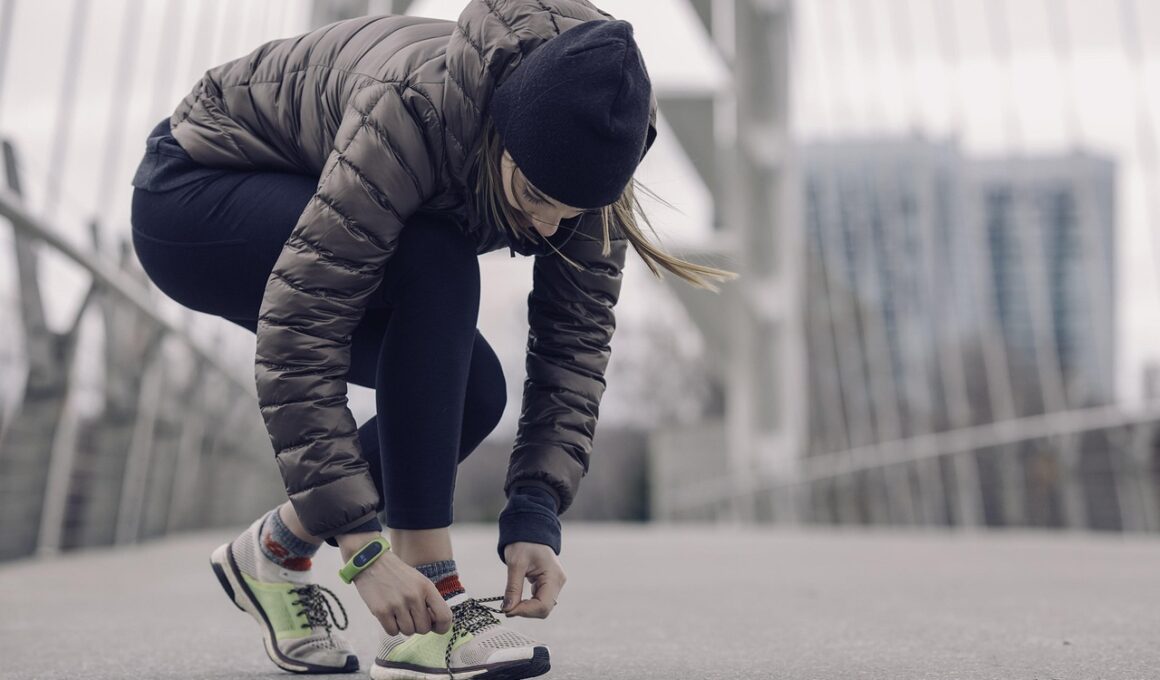Cold Exposure and Its Effects on Inflammation and Pain Management
Cold exposure therapy has gained significant attention in the fitness industry for its unique health benefits, particularly in managing inflammation and pain. Athletes often face chronic soreness and inflammation due to intense training regimens. Incorporating cold exposure, such as ice baths or cryotherapy, can profoundly impact recovery. The method involves the body’s exposure to cold temperatures, which leads to physiological changes. These changes include reduced blood flow to tissues, modulating inflammation and pain. Cold therapy can also help reduce swelling by constricting blood vessels, leading to a decrease in inflammatory markers. As a result, many athletes are finding that using cold exposure can accelerate the recovery process, allowing for improved performance during training and competition. Furthermore, this therapy helps enhance the body’s ability to cope with physical stress, adding another layer of appeal to those dedicated to their fitness journeys. Overall, as this method continues to evolve, its effectiveness in inflammation management remains promising. It’s essential for coaches and athletes to consider these techniques for improved recovery strategies in today’s competitive environments.
To truly understand the benefits of cold exposure therapy, one must explore the underlying biological mechanisms. When athletic individuals are exposed to cold environments, their bodies initiate a series of responses aimed at protecting them from injury. The first response is vasoconstriction, where blood vessels narrow, reducing blood flow to the affected areas, thereby minimizing tissue damage. This rapid response helps lower inflammation, which is crucial during post-exercise recovery. Various studies highlight that cold exposure can significantly reduce muscle soreness and improve recovery outcomes. Additionally, the cold’s influence on nerve conduction can temporarily dull pain sensations, providing immediate relief. Another aspect worth considering is the mental component of utilizing cold therapy. Enduring the discomfort of cold is often perceived as a mental challenge that can enhance mental toughness and resilience. Athletes consistently strive to find ways to optimize performance, making cold exposure an attractive addition to their routines. Coaches are increasingly adopting this approach to prepare athletes for the rigors of competition. Understanding these physiological benefits further enriches one’s appreciation for cold exposure’s role in the fitness landscape as a whole.
Implementing Cold Exposure in Recovery Regimens
When incorporating cold exposure therapy into a fitness routine, clarity in implementation is key. Athletes should choose the method that best aligns with their needs and preferences, which can include methods such as ice baths, cryotherapy sessions, or localized cold packs. The cold bath method often requires submerging in a tub of ice-cold water for a duration of 10 to 15 minutes, which can significantly enhance recovery. Conversely, localized therapy targets specific areas, allowing for focused treatment where pain and swelling may occur. While the desired temperature may vary from person to person, it’s vital to listen to one’s body to prevent hypothermia or frostbite. Despite its benefits, it’s essential to avoid overusing cold exposure, which can hinder muscle growth if done excessively. The ideal application hinges upon balancing cold therapy with other recovery techniques, like stretching and hydration, to achieve optimal athletic performance. Thus, understanding how and when to use cold exposure becomes crucial in a comprehensive recovery regimen, ensuring athletes recover effectively and maintain peak performance levels throughout their training cycles.
Beyond basic recovery, cold exposure therapy can also assist in managing chronic conditions associated with inflammation and pain. For instance, individuals dealing with arthritis or chronic pain syndromes may experience significant relief through targeted cold exposure. By regulating blood flow and reducing inflammatory responses, cold applications can help over time, improving overall mobility and reducing pain perception. Clinical studies indicate a high level of satisfaction among users, who report enhanced quality of life and decreased reliance on medication. As a preventative measure, cold therapy shows potential benefits for aging populations or those at risk of developing inflammatory diseases. By promoting blood circulation and reducing inflammatory markers, cold exposure may contribute to healthier aging processes. Moreover, the affordability and accessibility of ice baths or cold packs makes it a practical choice for many individuals. As more people become aware of these advantages, the integration of cold exposure into health and fitness practices will likely continue to grow, establishing new benchmarks for recovery and pain management strategies.
Scientific Research Supporting Cold Exposure Therapy
Scientific research plays a pivotal role in validating the efficacy of cold exposure therapy in the realm of fitness and health. Numerous studies have been conducted to explore its impact on inflammation and pain management. Meta-analyses indicate a strong consensus regarding cryotherapy’s ability to reduce muscle soreness after exercise. Researchers assert that the cooling mechanisms employed in these therapies can affect the inflammatory process on a cellular level. Additionally, cold exposure has shown potential in regulating cytokine production, which directly influences inflammation. Longitudinal studies suggest that athletes who consistently utilize cold exposure in their training may experience cumulative benefits over time. The emerging data encourages further exploration into how varying temperatures and exposure durations affect outcomes, creating individualized treatment plans for optimal results. This continual assessment of cold therapy positions it as a credible tool in enhancing athletic recovery. As research progresses, practitioners and athletes alike are encouraged to stay informed about the latest findings to make data-driven decisions regarding their recovery protocols.
In addition to its physical impacts, there are psychological benefits associated with cold exposure therapy that should not be overlooked. The mental toughness and resilience gained from enduring cold temperatures can translate effectively into an athlete’s competitive performance. Many individuals claim that overcoming the initial discomfort of cold exposure allows them to build a more robust mindset. Consequently, the mental component reinforces the concept of pushing boundaries, leading to growth in both mind and body. This ability to cope with physical discomfort often extends beyond training; it can help athletes better manage pressure during competitions. Some athletes utilize cold exposure strategies as part of their pre-competition rituals, setting the stage for a focused mindset. Furthermore, shared experiences within teams undergoing cold therapy sessions can foster camaraderie and support, enhancing team dynamics. Such mental advantages may contribute to improved performance, demonstrating that the benefits of cold exposure reach far beyond alleviating physical pain and inflammation. Understanding this holistic approach enables athletes to derive maximum value from their fitness regimens, facilitating a comprehensive path to success.
Conclusion
In conclusion, cold exposure therapy emerges as a multifaceted tool in the fitness industry, addressing both inflammation and pain management effectively. As athletes seek to enhance their recovery strategies, cold exposure offers practical solutions that optimize performance. The evidence supporting its physiological benefits allows practitioners to confidently incorporate this technique into their routines. While it is essential to listen to one’s body and avoid overuse, the potential advantages are profound. From immediate relief to long-term benefits, cold exposure can significantly enhance recovery outcomes. Moreover, as scientific research continues to evolve, more reliable data will underline its importance within athletic circles. In future fitness paradigms, cold exposure therapy is likely to carve out a more substantial niche, promoting innovative strategies in recovery and overall health. Consequently, understanding the interplay of physical and mental resilience created by cold exposure will be vital for any athlete’s journey to peak performance and wellness.
Ultimately, the integration of cold exposure therapy presents a forward-thinking approach within the fitness industry. As health and wellness become increasingly prioritized, athletes and fitness enthusiasts alike benefit from the knowledge of emerging recovery strategies. It becomes crucial to explore all available modalities and select those that cater to individual needs. The incorporation of cold exposure should be viewed as a component of a broader recovery strategy that harmonizes with other methods, ensuring a well-rounded athletic regimen. Building awareness about cold exposure therapy will encourage individuals to take charge of their recovery processes. Whether one is an elite athlete or a casual gym-goer, understanding the need for adequate recovery becomes paramount in achieving fitness goals. By embracing innovative practices like cold exposure, the fitness community enhances awareness and increases overall health literacy. In an environment where performance drives motivation, leveraging the proven benefits of cold exposure therapy can provide individuals with the edge they seek. Thus, it’s an exciting era for athletes, as cutting-edge techniques redefine traditional recovery paradigms.


